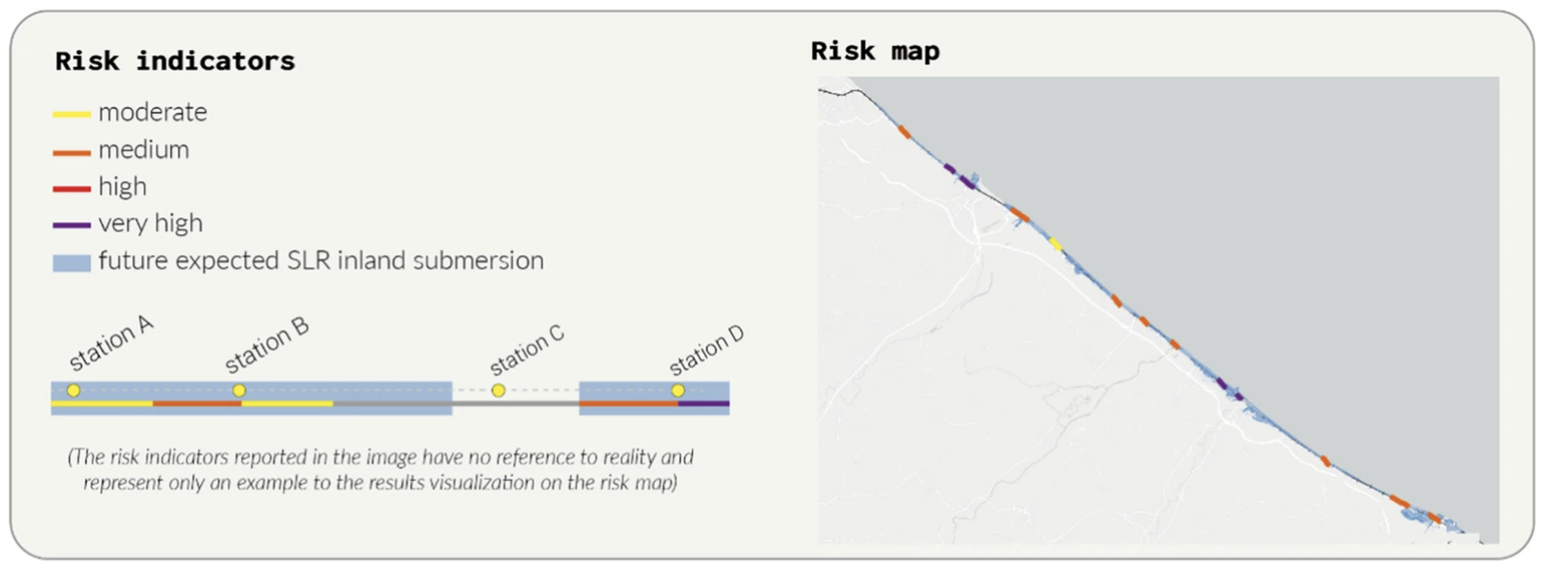
Infrastructure plays a key role in ensuring the effectiveness of sustainable and low carbon strategies. A new study, led by CMCC in collaboration with Parthenope University of Naples and Rete Ferroviaria Italiana Gruppo FS (the Italian national railway infrastructure manager), develops a methodology that can help decision makers identify risks under different climate change scenarios.
The impact of climate change on infrastructure resilience is a rising issue, particularly when it comes to crucial infrastructure such as national railways, which are key to providing essential low carbon options for services such as transportation.
A new study, led by CMCC in collaboration with Parthenope University of Naples and Rete Ferroviaria Italiana (RFI), addresses the importance of preparing railway infrastructure for the predicted effects of climate change, namely the impact of sea level rise on coastal railways, which are crucial to both the transport of people and goods.
“Damage or disruptions caused by flooding and sea-level rise could significantly impact people’s daily lives and the economy, from delayed travel to increased maintenance costs,” says CMCC researcher and lead author of the study, Guglielmo Ricciardi. “Our research underlines the necessity for adaptation measures that avoid these potential disruptions and highlights the need for participatory risk analyses to identify and prioritize the most effective measures for making infrastructure more resilient to the impacts of climate change.”
The study successfully defined and applied a methodology that allows for the evaluation of high-resolution sections of the Italian coastal railway that are most vulnerable to sea-level rise, providing key information that can be used to prioritize adaptation actions and protect railway infrastructure from future risks of submersion.

The figure includes visual representations of the geographical sections of railway at risk, which are color-coded based on risk severity. These maps, based on different RCP scenarios and timeframes, offer a clear visual understanding of which railway sections may face future submersion under projected sea-level rise conditions. Source: Ricciardi et al, 2024.
The paper highlights the role of the tool developed by CMCC to support decision-making processes in prioritizing future adaptation interventions not only for coastal railways but for different kinds of infrastructure.
“We implemented a risk assessment methodology combining climate hazard projections – sea level rise under various Representative Concentration Pathways scenarios (RCPs) – with the observed exposure and vulnerability, through the use of indicators,” explains Ricciardi. “This also involved the integration of stakeholder inputs, using a co-design approach to refine and prioritize the risk indicators: a methodology that therefore involves both experts and data-driven models and enhances the relevance and applicability of the results to real-world decision-making processes.”
This methodology can be replicated in the assessment of other exposed samples (such as non-coastal railways) and different climatic hazards, providing valuable information for decision-makers who are looking to identify risks and make informed decisions on where to allocate their resources.
“This work, carried out through a collaboration between CMCC, Parthenope University of Naples and RFI, is a concrete example of how climate science can effectively contribute to decision-making processes,” says CMCC senior researcher and co-author of the study Paola Mercogliano. “This kind of research demonstrates the value of collaboration between researchers and stakeholders. Without the direct involvement of infrastructure owners and research experts, it would not have been possible to translate climate data and analyses into practical and targeted solutions, showing that collaboration between the research world and private sector is the key to effectively addressing the challenges of infrastructure resilience.”
For more information:
Ricciardi, G., Ellena, M., Barbato, G. et al. Correction to: Risk assessment of national railway infrastructure due to sea‑level rise: an application of a methodological framework in Italian coastal railways. Environ Monit Assess 196, 945 (2024). https://doi.org/10.1007/s10661-024-13111-1


